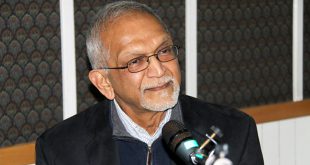The conference -The Early Islamic Empire at Work, The View from the Regions Toward the Center- aimed to understand the political and economic workings of a pre-modern empire, the Islamic Empire (660-940 C.E.), which stretches over almost the entire Hellenistic-Roman world from the Atlantic to the Hindukush.
The aim of the project is to understand the political and economic workings of a pre-modern empire, the Islamic Empire (660-940 C.E.), which stretches over almost the entire Hellenistic-Roman world from the Atlantic to the Hindukush. In contrast to the conventional model of an empire founded on a religious revelation, the project is the first systematic attempt to explain the functioning of the empire from its regions and the brokering and management abilities of the caliphate with its various elites.
While usually we have a top-down approach as seen from the center, this project takes the view from the regions, to explain the functioning of the caliphal government. The project looks at five key regions from North Africa to Central Asia, establishing their changing political and economic structures and chronologies, and identifying trans regional political, military, judicial, and indigenous elites. The tested hypothesis expects to see the central caliphal government in a more conscious role as moderator between the regions than has hitherto been recognized.
In order to shift our understanding of the functioning of the empire from a chronicle-driven top-down view to a region-driven view, a multidisciplinary and multilayered approach seems to be most appropriate. Parallel to the literary sources, but independent from center-based chronicles and biographical dictionaries, sequences of coins (Islamic coins display up to 150 words, conveying mostly administrative information), the results of archaeological excavations, and regional surveys will be investigated. The study of elite groups connecting the regions with the center is another important element and will ultimately result in the creation of a prosopographical database.
Emphasizing the role of the regions in the formation of the Islamic Empire points the view in a direction different from traditional ‘Islamwissenschaft’ which since its inception by Carl Heinrich Becker in 1910 has focused on Islam and its caliphate as the major formative force of the Empire.
The conference will also discuss the economic and fiscal reach of the early Islamic empire, which concerns its interest in fiscal extraction. The empire was very successful in maintaining a tax-driven administration. The monetization of the fiscal system allowed the transfer of wealth across the empire, and the extensive road and caravan networks further facilitated trade and monetary structures that connected regions which were geographically and culturally distant. The circulation not just of money, but also of industrial goods and merchandise created an imperial style from North Africa to Central Asia. On the other hand, regional currencies and industrial traditions remained highly visible until the 9th century CE, and re-appeared forcefully after the 940s. We would therefore like participants to discuss the ways in which economic structures and networks served as tools of imperial integration on the one hand, and as resources of both local resistance and belonging on the other.
The reach of empire also manifested itself in a range of integrating factors related to the provision of justice and the spread of Islam as an ‘imperial’ religion. How did the early Islamic Empire cultivate a legal system (or rather, systems) in light of the fact that the majority of the empire’s subjects remained non-Muslim during the 7th-10th centuries CE? How did the empire’s practice of dispersing justice operate alongside well-established Sasanian, Roman, Christian, Jewish, Zoroastrian and even Buddhist legal traditions? Throughout the early period, most of these legal systems flourished and formulated main corpora of their own doctrine, resulting in a rich tapestry and manifold forms of regional and local rulings.
We invite papers that consider the reach of law, Islamic and other, for the integration and functioning of the empire, as well as its role in the development of Islam as an ‘imperial’ religion. To what extent did ‘Islam’ serve as an integrating force, even if only for the imperial elite? How did the dimension of religion, conversion, and non-Muslim status relate to the reach of the empire, its various levels of integration, and the means by which integration was attained or resisted? The development of Islamic law in the late 8th and 9th century CE provided a crucial resource for regulating the empire’s workings. To what extent were the legal and religious dimensions of empire effective in extending its reach?
Apart from more conceptual papers, we encourage contributors to provide case studies that specifically respond to the conference’s themes and questions by elucidating the economic, socio-political, and legal dimensions of empire. The elements listed above are not exclusive, and further approaches to understanding the reach of the early Islamic Empire are welcome. Abstracts should be 500-700 words in length. Please send them to katharina.mewes@uni-hamburg.de before 31 January 2018. Papers will be pre-circulated; presentations at the conference should summarize the speaker’s major points without exceeding 25 minutes. The presentations will be followed by 20 minutes of discussion.
A financial contribution to travel and accommodation costs for accepted papers might be possible, but cannot be guaranteed at this point.
Important Dates
The deadline for proposals: 31 January 2018
Conference Date: 11-13 October 2018
Venue: Universität Hamburg, Germany
 Ijtihad Network Being Wise and Faithful Muslim in the Contemporary World
Ijtihad Network Being Wise and Faithful Muslim in the Contemporary World
